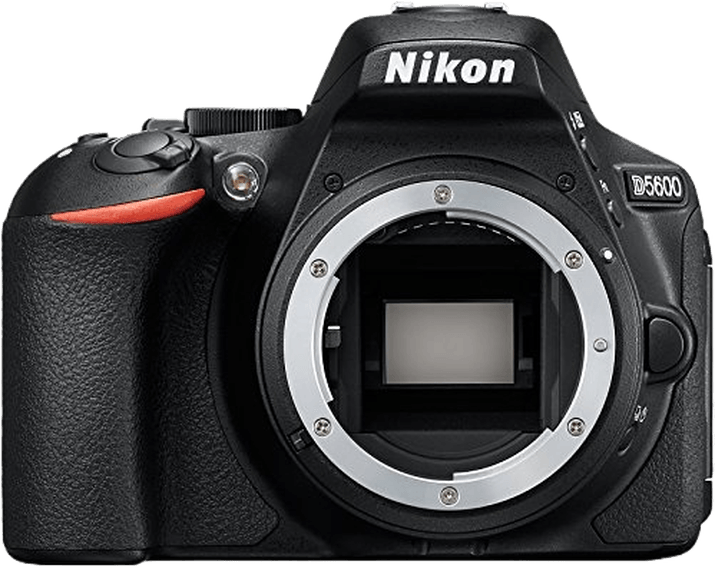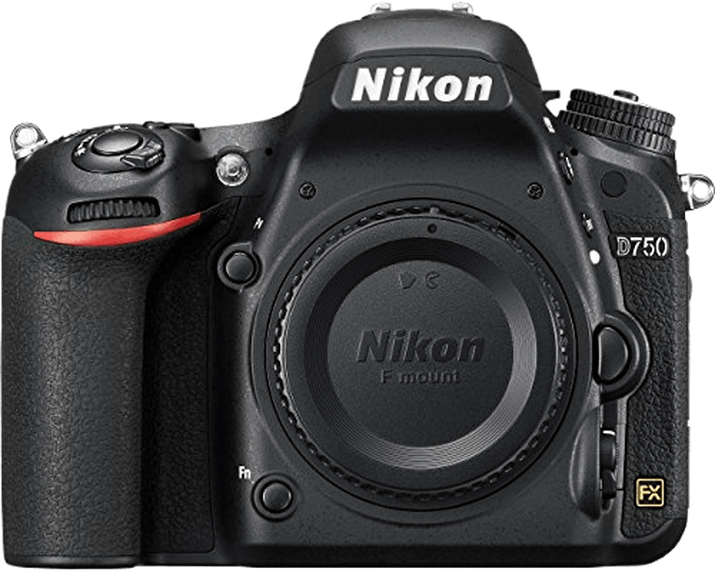Nikon D5600 vs D750 Comparison
Nikon D5600

Nikon D750

The Nikon D750 edges out the Nikon D5600 with a score of 68/100 compared to 66/100. Both cameras share similarities as DSLRs with a launch price of $2300 for the D750 and $700 for the D5600. The D750, announced in 2014, is larger and heavier than the D5600, measuring 141 x 113 x 78mm and weighing 750g. The D5600, released in 2016, comes in at a smaller size of 124 x 97 x 70mm and weighs only 465g.
The winning Nikon D750 stands out with its higher score, despite being an older model. The larger size and weight may indicate a more robust build and additional features. However, the Nikon D5600 offers the advantage of a more compact and lightweight design, making it easier to carry and handle.
Taking all factors into account, the Nikon D750 proves to be the better camera with its higher score, but the D5600 remains a strong contender with its portability and lower price.
Nikon D5600 vs D750 Overview and Optics
The Nikon D750 outperforms the Nikon D5600 in optics, scoring 71/100 compared to the D5600’s 65/100. Both cameras share several specifications, such as a CMOS sensor, Expeed 4 processor, Nikon lens mount, and lack of image stabilization. However, the D750 excels in certain areas, making it the superior choice for optics.
The D750’s advantages include a higher shooting speed of 6.5 compared to the D5600’s 5, a slightly larger sensor size (Full Frame vs. APS-C), and a higher DXOMARK score for the sensor (93 vs. 84). The larger sensor size allows the D750 to capture more light and produce better image quality, particularly in low-light situations. Its faster shooting speed enables photographers to capture more images in a shorter amount of time, which is beneficial for action or sports photography.
The D5600, on the other hand, has a slightly lower megapixel count (24.2 vs. 24.3), but this difference is negligible and does not significantly impact image quality. While the D5600 does not surpass the D750 in any specific area, it still performs well in terms of optics and is a solid choice for photographers who may not require the additional features offered by the D750.
In comparing the two cameras, the Nikon D750’s superior optics, faster shooting speed, larger sensor size, and higher DXOMARK score make it the better choice for those seeking optimal image quality and performance. However, the Nikon D5600 remains a reliable option for photographers who may not need the advanced features of the D750.
Nikon D5600 vs D750 Video Performance
The Nikon D5600 outperforms the Nikon D750 in video capabilities with a score of 70/100 compared to the D750’s 56/100. Both cameras share some common specifications, such as Full HD video resolution, maximum video dimensions of 1920 x 1080, and a maximum video frame rate of 60fps. However, there are differences that make the D5600 a better choice for video recording.
The most notable advantage of the D5600 over the D750 is its built-in time-lapse functionality. This feature allows users to create stunning time-lapse videos without the need for additional equipment or software, making it more convenient and user-friendly. The D750 lacks this feature, which could be a deal-breaker for those who frequently use time-lapse in their video projects.
On the other hand, the D750 does not have any significant advantages in video capabilities when compared to the D5600. Both cameras share the same video resolution, dimensions, and frame rate, which means that the D750 does not offer any additional benefits in terms of video quality or performance.
Taking these factors into account, the Nikon D5600 is the clear winner in terms of video capabilities, mainly due to its built-in time-lapse functionality. The Nikon D750, although a great camera for other purposes, falls short in this area and may not be the best choice for those who prioritize video recording. The D5600’s higher score reflects its superior performance in video recording, making it a more suitable option for videographers.
Nikon D5600 vs D750 Features and Benefits
The Nikon D5600 surpasses the Nikon D750 with a feature score of 72 out of 100, compared to the D750’s 59. Both cameras share several key specifications, including a 3.2-inch screen size, flip screen capabilities, and the absence of GPS. Additionally, both cameras offer WIFI connectivity, allowing for easy transfer of photos and remote control of the camera.
The D5600 outperforms the D750 in terms of convenience and user experience, mainly due to its touchscreen capabilities and Bluetooth connectivity. The touchscreen allows for more intuitive control and easier navigation through menus, while Bluetooth provides seamless connection with smartphones and other devices for quick photo sharing and remote control.
On the other hand, the D750 has a marginally higher screen resolution at 1,229,000 dots, compared to the D5600’s 1,037,000 dots. This results in a slightly sharper and clearer display on the D750, which could be beneficial for photographers who prioritize image review and detailed menu navigation.
However, the advantages of the D750’s screen resolution do not outweigh the D5600’s superior feature score and additional capabilities. The D5600 offers a more user-friendly experience with its touchscreen and Bluetooth connectivity, making it the better choice for those who value convenience and ease of use.
Ultimately, the Nikon D5600 stands out as the better camera in terms of features, providing a more enjoyable and efficient photography experience. The Nikon D750, while offering a slightly better screen resolution, falls short in comparison due to its lack of touchscreen and Bluetooth functionality.
Nikon D5600 vs D750 Storage and Battery
The Nikon D750 outperforms the Nikon D5600 in storage and battery with a score of 79/100, compared to the D5600’s 43/100. Both cameras accept SD, SDHC, and SDXC memory cards, and neither offers USB charging.
The D750 excels with its dual memory card slots, providing added storage capacity and backup options. Additionally, its battery life of 1230 shots surpasses the D5600’s 970 shots, and the D750 uses the more powerful EN-EL15 battery, compared to the D5600’s EN-EL14a.
The D5600, however, does have one advantage in its compatibility with UHS-I memory cards, allowing for faster data transfer speeds.
Considering these factors, the Nikon D750 proves superior in storage and battery capacity, while the Nikon D5600 offers slightly faster memory card performance.
Nikon D5600 vs D750 – Our Verdict
Are you still undecided about which camera is right for you? Have a look at these popular comparisons that feature the Nikon D5600 or the Nikon D750:

